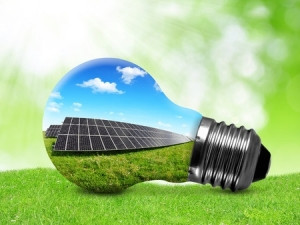
There are many misconceptions about the value of wind and solar power, including that it is expensive and unreliable in SA.
According to a young scientist at the Council for Scientific Research (CSIR) - Joanne Calitz - who uses mathematical modelling to quantify the true value of renewable energy, SA's first wind and solar projects created over R4 billion in financial benefits during the first half of 2015.
Eskom CEO Brian Molefe recently caused a storm when he criticised renewable energy, saying the alternative power sources have not yet developed enough to perform efficiently and make a meaningful contribution to electricity supply in SA.
"One of the biggest challenges has been convincing people that renewable energy can contribute stable and reliable energy to the South African power system at very competitive costs. This is why we need to create a reliable knowledge-base which people can use to make informed decisions about renewable energy," says Calitz.
After graduating in industrial engineering at the University of Pretoria in 2009, Calitz was introduced to energy system modelling when she worked for Eskom for five years.
"Energy system modelling entails simulating a power system - such as South Africa's power system - mathematically in a software tool, to perform analysis on how the power system behaves under a certain set of data assumptions and scenarios.
"Since a power system is a complex, integrated system, simulating it allows you to better understand the linkages and effects which different components of the system have on one another."
During her years at Eskom, Calitz specialised in the optimisation of power systems. She then learnt the CSIR had established an energy centre and it was trying to grow its science, engineering and technology base that focuses on energy.
"I read about the energy centre and the CSIR in general and felt it was the perfect environment to conduct meaningful power system studies for both research and application in industry."
Since joining the CSIR in March 2015, she has had the opportunity to work on multiple projects, including a study in 2015 which analysed the financial benefits of renewable energy in SA, a first-of-its-kind for the country.
According to the CSIR, SA has abundant wind and solar energy resources, but these have not been fully exploited for the country's economic benefit.
The research institute partnered with Germany's Fraunhofer Institute for Wind Energy and Energy System Technology (Fraunhofer IWES) to quantify the combined aggregation effects of these two energy sources.
"A highlight of 2015 was the opportunity to spend a month in Germany at Fraunhofer IWES to work and be trained on the wind and solar photovoltaic (PV) aggregation study," Calitz says.
"The results indicate that wind and solar PV installations provide smooth power output when the power plants are dispersed over a large area. It also indicates the magnitude and cost competiveness of wind power in South Africa is on par with solar PV.
"Ensuring this information is incorporated in energy planning studies will prove South Africa can confidently pursue a large renewable-based mix in its power system," says Calitz.
Share